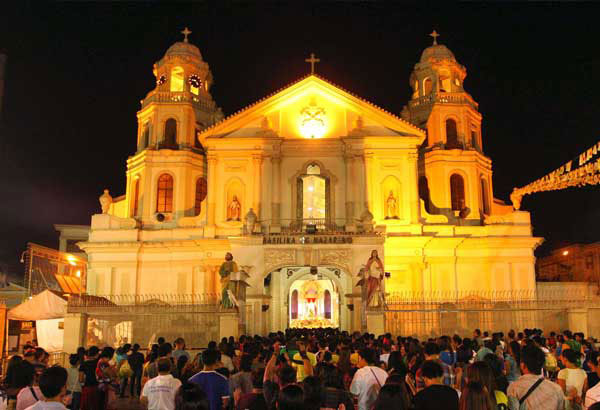Simbang Gabi starts today

Among the Filipino Christmas traditions, nothing is more embedded in the local culture than the Simbang Gabi, which is celebrated in anticipation of Christmas and to honor the Blessed Virgin Mary. ERNIE PEÑAREDONDO
MANILA, Philippines - Filipinos will flock to churches at dawn today to celebrate the start of the nine-day Simbang Gabi or dawn masses.
Among the Filipino Christmas traditions, nothing is more embedded in the local culture than the Simbang Gabi, which is celebrated in anticipation of Christmas and to honor the Blessed Virgin Mary.
This tradition dates back to 1587 in Mexico when the pope granted a petition of Fray Diego de Soria to hold Christmas masses outdoors to accommodate the huge number of people attending the evening mass.
Christmas masses at the time were held early in the morning to symbolize the actual time of the birth of Christ. It was eventually adjusted to pre-dawn hours for the convenience of churchgoers.
The dawn mass was introduced in the Philippines in the 17th century by the Spanish conquistadores.
The ringing of church bells wake up devotees, who make their way to church amid the light from flickering candles of Christmas lanterns that adorned the houses.
In some rural areas, brass bands play Christmas music all over town an hour before the mass to encourage the faithful to go to church.
It is also said that in earlier times, parish priests would go knocking on doors to wake and gather the faithful to the misa de gallo.
This was convenient for farmers and fishermen who had to wake up early for work. It gave them time to hear the Gospel and ask for good harvests before going to the farm or out to sea.
Despite changes in the modern age, Simbang Gabi continues to be the foundation of Catholic Christmas celebration.
True meaning
The true meaning of Simbang Gabi is one of the legacies of faith the Spanish missionaries bequeathed to Filipinos.
Along with praying the Angelus at 6 p.m., family rosary at night and blessing the children with the sign of the cross, the dawn mass is part of the evangelization process started by the Spaniards in the Philippines.
The morning masses were introduced to enable the people to understand the meaning of Christmas and how to prepare for the coming of the Messiah.
It was also used to catechize the people on the meaning of the mass.
Simbang Gabi, from the onset, was an opportune time for priests and laymen to teach and preach to the community about the coming of the Lord and rejoicing in the promise of the Messiah.
Mass and socialization
As the Simbang Gabi tradition continued after the defeat of the Spaniards by the Americans, the Filipino Christmas tradition became a social festivity that incorporated the now popular salo-salo or get together.
While this made Simbang Gabi acceptable to more people, the religious meaning of the celebration was relegated to the background as people went to church not so much to prepare themselves spiritually for the coming of Christ, but to meet family and friends and socialize.
Experts on religion thereafter described Simbang Gabi as a form of popular religiosity.
Prior to Vatican II, however, the official church looked at popular religiosity with some skepticism because the negative aspects were emphasized more than the positive.
Meanwhile, the Archdiocese of Manila (RCAM) advised Filipinos intending to attend Simbang Gabi in malls to dress appropriately.
RCAM-Commission on Liturgy assistant commissioner Fr. Carmelo Arada Jr. said Filipinos should not wear shorts, tank tops and sleeveless blouses when attending Simbang Gabi, even in malls. – With Evelyn Macairan
- Latest
- Trending





























